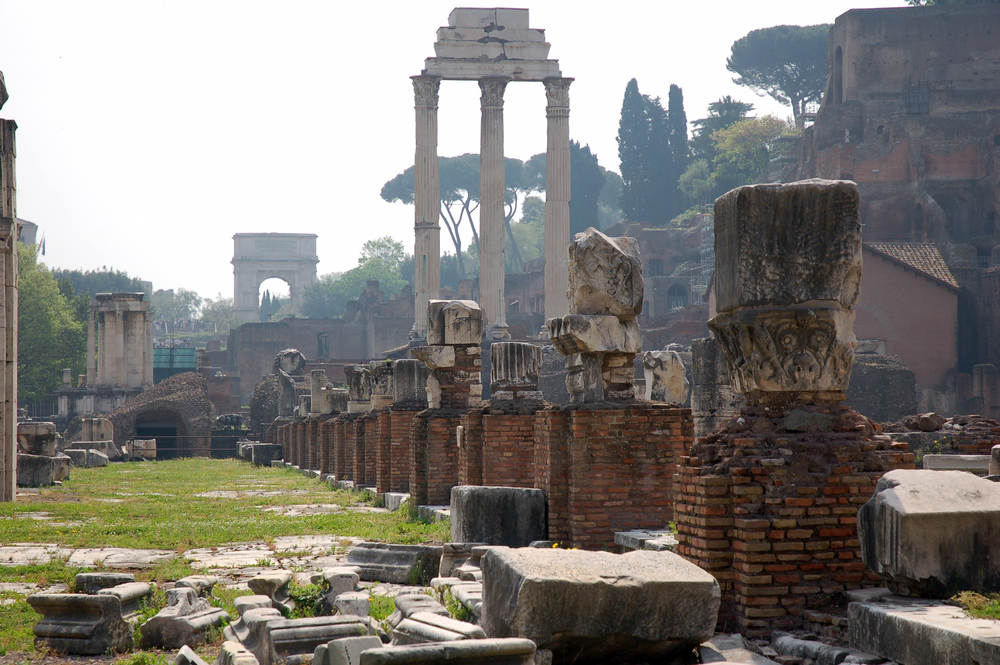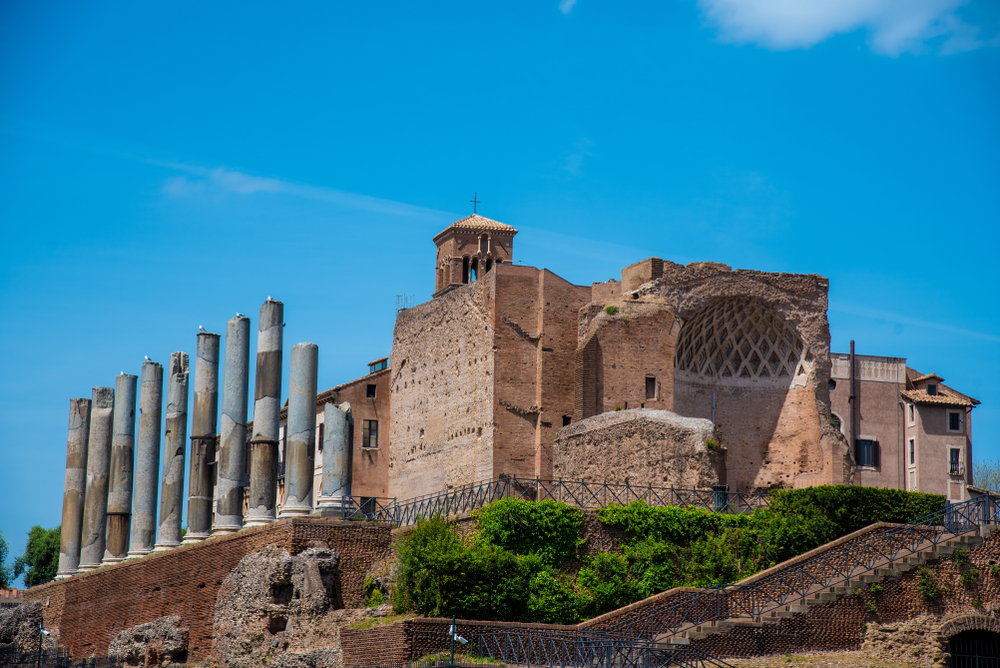Domus Aurea, or the Golden House, is one of the most extravagant and awe-inspiring palace complexes ever built in ancient Rome. Constructed by Emperor Nero after the Great Fire of Rome in AD 64, it showcases the lavishness and opulence of his reign.
Today, this hidden underground marvel allows visitors to step back in time and experience the splendor of Nero’s imperial vision.
In this guide, you’ll find everything you need to know about visiting Domus Aurea, its history, what to see, visitor tips, and nearby attractions.
The Domus Aurea Quick Facts
Tickets for The Domus Aurea
Access to Domus Aurea is only possible through guided tours, which must be booked online in advance.
Ticket options include a unique virtual reality experience that reconstructs the palace as it once stood, offering a breathtaking glimpse into its original grandeur.
Secure your spot early to ensure a memorable visit!
Do I Need a Guided Tour to the Domus Aurea?
Yes! A guided tour is mandatory to explore Domus Aurea. These tours are led by expert guides who provide detailed insights into the palace's history, art, and architecture, making the experience truly immersive and educational.

Things to Do at the Domus Aurea
Exploring Domus Aurea
- Virtual Reality Experience: Relive the Golden House as it once was, with vibrant frescoes and opulent decor brought to life through cutting-edge technology.
- Coenatio Rotunda: Marvel at the rotating dining room, a masterpiece of engineering that offered Nero’s guests ever-changing views of the palace gardens.
- Frescoes and Stucco Work: Admire the intricate mythological scenes and detailed stucco decorations that inspired artists like Raphael and Michelangelo.
- Nymphaeum: Visit the water-themed grotto that exemplifies Nero’s luxurious lifestyle and artistic vision.
Hidden Gems
- Courtyards and Gardens: Explore the remnants of the sprawling gardens and courtyards that once surrounded the palace, offering a glimpse into the grandeur of Nero's private paradise.
How to Get There & Location
Domus Aurea is located on the Oppian Hill, north of the Colosseum, in the heart of Rome. It’s easily accessible via multiple transportation options:
- By Metro: Closest station is Colosseo (Line B), just a 5-minute walk.
- By Bus: Lines 5, 51, 75, 85, 87, 117, and 118 serve the area.
- On Foot: Enjoy a short walk from landmarks like:
- Colosseum: 6 minutes
- Roman Forum: 11 minutes
- Trevi Fountain: 24 minutes
- Pantheon: 28 minutes
You can find official Public Transport Maps via this link.
Opening Hours & Best Time to Visit
- Domus Aurea is open only on Fridays, Saturdays, and Sundays from 9:15 am to 5:15 pm.
- Due to the limited access, booking your tour in advance is essential. Early morning tours provide a quieter experience, ideal for those looking to explore without crowds.

A Brief History of Domus Aurea
The story of Domus Aurea begins in AD 64, after the Great Fire of Rome provided Emperor Nero with the opportunity to build a palace of unparalleled luxury. Designed by architects Severus and Celer, and adorned with decorations by the painter Fabullus, the palace featured grand gardens, pavilions, a man-made lake, and lavish interiors coated in gold leaf and gemstones.
After Nero’s death in AD 68, subsequent emperors, starting with Vespasian, sought to erase his legacy. The Colosseum was constructed over the site of the artificial lake, and by the early 2nd century, the palace was buried and forgotten. Rediscovered in the 15th century, Domus Aurea inspired Renaissance artists like Raphael and Michelangelo, who explored its intricate frescoes and revived the “grotesque” style of art. Today, Domus Aurea stands as a testament to Nero’s ambition and the enduring allure of Roman art and architecture.
Facilities & Accessibility of the Domus Aurea
- Restrooms: Available near the entrance.
- Bookshop: Find books and souvenirs related to Domus Aurea and ancient Rome.
- Cloakroom: Store coats and small bags as large items are not permitted inside.
- Virtual Reality Experience: Enhance your visit with a virtual reconstruction of the palace.
Accessibility: Due to its underground structure, Domus Aurea is not accessible to visitors with mobility impairments or wheelchairs.
Visiting Rules of the Domus Aurea
- Guided Tours Only: Entry is exclusively through guided tours. Booking in advance is required.
- No Large Bags: Only small bags are allowed inside. Large bags and backpacks must be stored.
- Photography: Flash photography is prohibited to protect the delicate frescoes.
- Respect the Site: Do not touch the walls, frescoes, or artifacts.
Traveler Tips
- Book Early: Tours fill up quickly, especially during peak seasons. Reserve your spot well in advance.
- Wear Comfortable Shoes: The tour involves walking through uneven terrain.
- Bring a Jacket: The underground chambers can be cool, even in summer.
- Listen to the Guide: Their insights greatly enhance your understanding of the site.
Lesser-known Fun Facts & Secrets of Domus Aurea
- Nero’s Rotating Dining Room: The Coenatio Rotunda was a revolving dining room, allowing guests to enjoy changing views of the palace grounds.
- The Colossus of Nero: A towering statue of Nero, standing over 120 feet tall, dominated the palace entrance.
- Inspiration for Renaissance Artists: Rediscovered frescoes in Domus Aurea inspired the “grotesque” style that became popular during the Renaissance.
- Underground Wine Storage: During the Middle Ages, parts of Domus Aurea were used as wine cellars, helping preserve sections of the palace.

Top Attractions Near Domus Aurea
- Colosseum (6-minute walk): The world’s most famous amphitheater, where gladiators once fought for their lives.
- Basilica di San Pietro in Vincoli (8-minute walk): Home to Michelangelo’s iconic sculpture of Moses.
- Roman Forum (11-minute walk): The heart of ancient Rome, filled with temples and public buildings.
- Palatine Hill (11-minute walk): The mythical birthplace of Rome, offering panoramic views of the city.
- Circus Maximus (15-minute walk): An ancient stadium where chariot races once thrilled Roman crowds.
- Monument to Vittorio Emanuele II (17-minute walk): A grand tribute to Italy’s first king, featuring stunning architecture.
- Capitoline Museums (17-minute walk): A treasure trove of ancient Roman art and artifacts.
- Basilica di Santa Maria Maggiore (17-minute walk): A stunning example of early Christian architecture in Rome.
- Trevi Fountain (24-minute walk): Toss a coin and make a wish at this legendary fountain.
- Pantheon (28-minute walk): A remarkably preserved ancient temple, now a church, showcasing Rome’s architectural mastery.
A visit to Domus Aurea is a journey back in time, offering a rare glimpse into the grandeur of Nero’s Rome. After exploring this fascinating underground palace, don’t miss the chance to visit nearby attractions like the Colosseum, Roman Forum, and Trevi Fountain. Whether you're captivated by its history, art, or architecture, Domus Aurea is a must-see destination that enriches your understanding of Rome’s imperial past.

